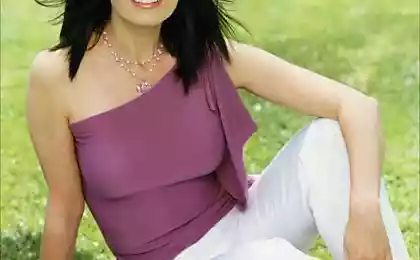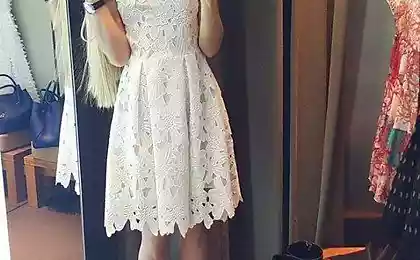836
The pace of ageing and biological age
Age norm and normal aging rate in physiology and medicine — a generic term equilibrium of the human body, its organs and functions to ensure its optimal functioning in the environment.
Structural and functional norm of the body — the basis of its overall stability — resistance to ensure the health, efficiency, adaptability and active longevity.
In biology and medicine common understanding of the rules as the average of the option (the"mathematical rule"). It is very substantial, but still insufficient category, as normal (optimal) livelihoods and health can be maintained in a fairly wide range of variability in physiological parameters. Therefore, the rule should include not only mathematical rule, but a series of deviations from it within certain limits.
Although the boundaries of age norms is sometimes quite blurred, they still define the periodization of ontogeny, primarily in its major stages — infancy, maturity 'and extinction, that is, there is a necessary sequence of programmed shift rules.This suggests the presence of age norms for each age and each population.
But unlike the period of development of the border "regulations" on the stage of decay to determine much more difficult, as there are no abrupt transitions between elderly, senile age and dolgozhitelskie. Such limits are rather conventional and are largely determined by life expectancy, fluctuations which drastically change the ideas about the turn of the age. This boundary may shift I. under the influence of changes to the structure and health of the population. Aging period, there are difficulties of differentiation of norm and pathology, between which is not always possible to draw a clear line. Therefore, the notion of "rules of aging" to some extent debatable.
American biochemist William R. (1960) even considered that in General it is impossible to speak about normal in all respects "standard" person, because each person in any way deviates from the norm. Thus, continuous compensation health occurs not only in old age, but in fact, starting from birth. It is carried out continuously as the main special property of health, and this internal contradictory unity of health and pathology, which cannot be broken, exists throughout a person's life (Korolkov, Petlenko, 1977). In practice in gerontology and clinical medicine usually anyway used the age norm or, more precisely, the norms, that is typical for this age stage, the fluctuation range of morpho-functional characteristics.
Since the period of aging is not only slow, top-down development, senile involution, but also a very high level of adaptive capacity, the allocation of age-related "norms", in addition to conventional tests, necessary and functional tests, and especially the resurvey.
To develop age norms also requires a careful selection of the surveyed contingent of persons most close to physiological aging. It should be the people leading an active way of life, that is, preserving the rest of your life, physical and mental abilities, sufficient for normal life and self, often and for professional work. For this purpose, the necessary long-term longitudinal observation the same individuals, usually within 10-15 years. They allow to determine the individual characteristics of the pace and nature of aging, its physiological or pathological type.
To estimate the individual rate of development (aging) is the category of biological age.
Biological age aging period and methods of its assessment
Biological (functional) age is a fundamental feature of the rate of development (aging). In the period of development it is determined by the achieved level of morpho-functional maturation on a background of population standard.
In the period of decay of the biological age is the degree of true aging, the level of vitality and overall health of the body. It is defined as "the set of indicators of the status of the individual, in comparison with those of healthy people of the same age the current age, ethnic, geographical and economic conditions of existence" (Chebotarev, Mintz, 1978).
Biological age, in addition to heredity, to a large extent t o the environmental conditions and lifestyle. Therefore, in the second half of life people of the same chronological age can vary greatly at the morphological and functional status, i.e., biological age. Her age are usually those who have favorable everyday lifestyle combined with a positive heredity (a large supply of vital forces and absence of risk factors).
The main manifestations of biological age in aging — disorders of vital functions and the narrowing of the range of adaptation, occurrence of diseases and increased likelihood of death or reduced life expectancy. Each of them reflects the biological time and the associated increase in biological age (V. P. Voitenko, 1987).
Methods of assessment of biological age and its main criteria.
The introduction of the concept of "biological age" due to the fact that the calendar (chronological) age is not a sufficient criterion of health condition and working ability of the aging person. Among peers for chronological age usually there are significant differences in the rate of age-related changes. Discrepancies between chronological and biological age, allowing to estimate intensity of aging and the functional capacity of the individual, ambiguous in different phases of the aging process. The high speed of age-related changes have been reported in centenarians, in the younger groups they are insignificant.Therefore, to determine the biological age has a meaning only persons over the age of 30 or even 35 years. Its evaluation in aging required gerontologists, clinicians, social workers to address socio-hygienic problems, diagnosis of diseases, judgement of the health and effectiveness of interventions to slow aging and prolong active ageing.
In the case of the backlog of biological age from chronological to assume greater duration of forthcoming life, in the opposite variant — premature aging. That is, we are talking about physiological or premature (pathological) ageing.
The search for such criteria of aging — the most important task of gerontology. It is hardly possible to determine such tests only according to the so-called "cross" observation, that is, the simultaneous examination of persons of elderly and senile age, grouped with an interval of 5-10 years.Because it explores the different generations, exposed to different factors of life and education (nutrition, nature of work, number of other biological and social factors). Therefore, in addition need much more time-consuming long-term "longitudinal" observation of that requires a lot of time and costs. But with their help it is possible to determine the individual characteristics of the pace and nature of aging, related diseases and risk factors and criteria of biological age.
Evaluation of various proposed test on the value of the coefficient of correlation (relation of the maximum when the value is equal to ± 1,0) showed that many of the previously described manifestations of aging give a high enough relationship with chronological age. So, the correlation coefficient increased osteoporosis of the metacarpal bones is equal to 0.78, and vital capacity (VC) — to -0,77, systolic blood pressure — up to 0,64—0,71, etc., However is not always high communication characteristic chronological age may help to adequately assess the biological age and predict life expectancy.
"Good" relations with chronological age and can be traced to the graying of hair or skin elasticity, which, as mentioned, provide little information about the timing of the forthcoming life and biological age. Should probably be assumed that biological aging is characterized, first and foremost, change the vitality in the life cycle. This quality can not yet be measured directly. The difficulty lies in the fact that age-related changes develop at different rates, and the differences are so great that fast-paced change is ruining a man before much of the developing more slowly, become visible.Therefore, the first considered a disease, and the second just age, but if the medicine could cope quite effectively with the first, the second, too, could develop the disease. Thus, not all gradually developing chronic injuries can be attributed to purely age-related changes and consider them useful indicators of biological age.
To illustrate the above, here are a few examples. The complex of tests for the outpatient research program long-term monitoring of aging (Institute of gerontology, Academy of medical Sciences of the USSR);
1. Anthropometric data and indicators of aging: standing height, height sitting, chest circumference, shoulder diameter, weight, thickness of skin folds, radiography of the hands.
2. Functional indicators of the condition of organs and systems: heart rate, blood pressure, respiratory rate, vital capacity, maximum breath holding on inhale and exhale, the muscle power brush (dynamometry), roentgenoscopy of the chest organs, visual acuity, simple memory test, ECG, the propagation velocity of the pulse wave, rheoencephalography, determination of vibration sensitivity, a test of psychomotor tempo.
3. Laboratory researches: the General analysis of blood, urine, biochemical blood tests (cholesterol, lecithin, blood sugar).
Shorthand method of determining the biological age for adults, persons: cardio-pulmonary system (systolic blood pressure, VC, arterial partial pressure of oxygen); the senses, the mind (vision, hearing, ability to switch attention); locomotion (the ability of elastic tendons); the condition of the teeth (number of teeth).Were considered the norm deviation of biological age from chronological within + 5 years; if it ranged from 5 to 10 years down, the result was evaluated as "good"; over 10 years — as "very good". When you movement upwards, respectively, the result was evaluated as "a little premature senescence" and "premature aging."
One of the most developed of the anthropological criteria of the biological age of maturity and aging is based on detailed study and evaluation of age osteoporose status (for radiography of the hand). The method was tested in anthropological studies of several thousand individuals in 20 ethno-territorial communities of the former Soviet Union, and showed its suitability to assess individual traditional biological age in aging populations, and group level as an integrated indicator of the level of sanitary well-being of the population, its flexibility in regard to the impact of the environment. This approach gave good results in the survey dolgozhitelskie groups in Abkhazia (Pawlowski, 1987).
Biological age of men and women
In public opinion there is a pervasive idea of an early and rapid aging of women. This is reflected in the preferences, which are usually given to those marriages, when the groom older than the bride, but not Vice versa. However, here the two are mixed does not quite match between the phenomena.
Biological processes, according to the gerontology, women age more slowly and live longer than 6-8 years. For example, similar changes in the tissues of old women and men come in before the last 8 years, that is, biological aging in women occurs later. The greater viability of women is maintained throughout life.
Originally laid more male embryos, and during the first years of life, and even the second and third decades may remain a male-dominated, but by the end of the third decade the number of both sexes almost compares, and further enhanced by increasing the numerical predominance of women. Among centenarians aged 100 years this ratio is about three to four women per man.
Probably, a certain role can play the protective function of female sex hormones — estrogen, providing anti-sclerotic effect, and the overall stability of the female body as an adaptation to increased biological stress during childbirth. After menopause women have faster developing atherosclerosis.
On the other hand, as already mentioned, in women earlier and abruptly stop childbearing. It is also a kind of adaptation, protect the aging body from the already unbearable for him the burden of pregnancy and childbirth. Female aging is often accompanied by "masculinities": deepening of the voice, facial features, figure, gait, gestures, appearance of facial hair (chin, upper lip), the tendency to poleceniu.
However, these processes are not necessarily binding and can individually vary significantly. Normally in healthy women the menopause is painless, although there may be circulatory disturbances ("hot flashes") and some diseases. It is on these phenomena and be based on more early aging women, although it is, as we have seen, and does not adequately General aging,reflecting more than just early "flowering" of women, commonly associated with loss of sexual attractiveness.
Men fading less distinctly and stretch for a longer period, but it equally leads to the aging of the whole organism. So men longer retain their reproductive capacity and have a more youthful appearance. However, this preservation sexual ability does not apply to the true viability of the organism: they have a more pronounced sclerotic processes, higher biological age, and overall life chances are lower than women of the same chronological age.The duration of life of men less than women.
Biological age and the Constitution
The pace of ageing and in the development to a certain extent depend on the human Constitution.
We have repeatedly addressed the relationship between biological age and morphological Constitution, symptoms build, for example, otnositelnoi body mass and development of fatty component. Installed a high frequency asthenoid option when a slowdown of the aging skeleton in some Central Asian groups (Pawlowski, 1985).
The biological age in various ecological and population and ethnic groups.
There are numerous data about the different rates of aging in different populations with sharply different environmental and social conditions. They revealed, for example, the rate of decrease of height, weight, muscle strength, basal metabolism, for the dynamics of arterial pressure, speed of psychomotor reactions and other indicators.
The most important aspect is the relationship between biological age with external (exogenous) factors, especially in extreme environmental conditions. The environment is complex not only natural but also social conditions. A special role among the external factors are anthropogenic, that is created by the activities of man himself. Under favorable climatic and, especially, social conditions, biological age lags behind chronological. The opposite pattern is noted, for example, in conditions of severe stress (Nazi concentration camp), the increase of background ionizing radiation (Chernobyl).
Essentially, the distribution of indices of biological age allows us to assess the sanitary sostajanie and well-being in the population (Pawlowski, 1987). Men's groups of today's rural population reveals a decline rate of aging of the skeleton in the direction from North to South. Relatively high rates were observed among indigenous peoples of the North — the Nenets, the Chukchi, Eskimos, Buryats.The relatively low aging rate was among the Abkhazians, some groups of Georgians, Karakalpaks and others. With age, the role of the environmental impacts is growing.

It is highly significant and the influence of social factors: groups with increased longevity, widespread tradition of respect for the elderly, their special social status. The critical role of social change aimed at improving health in the development of new extreme ecological niches, such as space, shift settlements in the North, in the desert, etc.
The role of ethnicity in determining biological age is much less than ecology. Recall that speech all time goes about osteoporos status, i.e., the aging of the skeleton. According to this indicator in extreme areas there is a restriction on individual diversity of biological age, i.e. the age dynamics of skeletal characteristics. In comfortable regions are marked by increasing diversity. Thus, each zonal-climatic region is characterized by the features of the flow "downward phase" of ontogeny, and they are mostly associated with external factors than to ethnicity. It was also noted the increase in the level of sexual dimorphism in the rate of aging of the skeleton of the population of the southern regions, especially with a high percentage of centenarians.
Premature aging
Premature aging in contrast to the physiological (natural) is a very common phenomenon in different groups of modern humanity.
The concept of physiological aging and "natural death" was introduced by I. I. Mechnikov, although he meant by this is, rather, a human ideal, which is fairly rare. The closer we can consider the nature of aging in some dolgozhitelskie groups. For the majority of elderly and old people differ in the degree of premature old age. In this case, the biological age is usually more or less ahead of chronological, that is, standards that correspond to it. For the real distinction of these two types of aging offered the following definition:
"Physiological aging" means a natural beginning and a gradual development characteristic of the species senile changes, limiting the body's ability to adapt to the environment.
"Premature ageing" — any partial or more General acceleration of aging, leading to the fact that the person ahead of the average level of aging in their age group.
Premature aging may depend on many factors — both internal (including and heredity), and from the influence of external (environmental) factors.Aging may contribute to the clinical manifestation of the disease, to be its direct cause or consequence. In medical and socio-economic terms, what matters most is premature aging in Association with age-related diseases that develop quickly lead to decrepitude and disability.Many experts believe that atherosclerosis, for example, is one of the main factors that determine the nature of aging and its pace.There is even an opinion that atherosclerosis is not a disease, and widespread age-related changes of the cardiovascular system, which occupies a special place on the frequency and severity of manifestations in the elderly. When the premature aging of the functional state of the cardiovascular system deteriorates to a greater extent than in physiological ("normal") aging. Progressive vascular sclerosis of the brain its symptoms resembles senile decrepitude in such features as changes of posture, skin, hair etc. Symptoms of cerebral sclerosis and aging are intertwined so closely that the first sometimes even seen as a possible model of premature aging.

Usually the biological age of such people over-sell. chickpeas, relatively for their age "norm". For individual indicators, persons with premature aging ahead of normal physiological aging of 10-15 years, although other characteristics can hardly be affected by age-related changes. Most patients center of gravity of the body was displaced anteriorly, which may be caused by changes in the spine. It varies considerably in endocrine formula: for example, men 45-55 years of age with symptoms of premature aging lowered the secretion of male hormones and elevated female. The weakened overall immune reactivity in the blood increased content of cholesterol.
When premature aging even more than usual, manifested a difference (heterochroneity) age-related changes of different body systems.
Signs of premature aging seen in some other chronic diseases, such as tuberculosis, peptic ulcer, diabetes adults, mental trauma, and more. They are shown and immune deficiency. Special role is played by mental and emotional stress, malnutrition, ionizing radiation.
A model of accelerated aging, some gerontologists believe and the so-called chronic fatigue syndrome. Most often it is observed in liquidators of the Chernobyl accident, persons from ecologically disadvantaged areas, post-surgical patients, with subsequent chemotherapy and radiation therapy in patients with chronic inflammatory diseases, businessmen excessive psycho-emotions of joy-tional loads. In the initial stages is not detected somatic changes. Treatment of this syndrome usually complex: normalization of work and rest, diet, vitamin therapy, hydrotherapy, physiotherapy, immunotherapy and more. A number of immunological, clinical and psychological indicators observed some overlap in the elderly and HIV-infected individuals, particularly changes in the Central nervous system.
The syndrome of premature old age, therefore, may result from many internal and external factors. A special place for the early manifestation is the syndrome of premature aging of the hereditary nature of already apparent pathology.
This so-called progeria.
Progeria distinguish between children and adults. Progeria in children is very rare. In some cases it is already apparent in 5-8 months, others in 3-4 years. In early childhood, child development proceeds normally, but then comes a sharp slowdown in growth and physical development, and develops dwarfism. The child acquires a senile appearance. Noted are the typical signs of aging, such as graying, baldness, wrinkled skin, atherosclerosis, elevated cholesterol and blood pressure, kyphosis of the thoracic spine. The parathyroid glands are rudimentary or absent. But when this syndrome is usually not expressed all the signs of natural aging, but only some. The average life expectancy of these patients 13 years of age, death usually occurs before 30 years of age from coronary disease.
Progeria in adults occurs later, usually on the third or fourth decades, more often in men. Growth at this time is already fully or partially completed, but there are a number of features in common with progeria children. The characteristic short stature, baldness, graying, and thin dry skin, sharp facial features, as well as osteoporosis, calcification of blood vessels, impaired sexual development, mild adult diabetes; altered function of the thyroid and parathyroid glands. But the overall condition of the body less deviates from the norm, than in children with progeria. Life expectancy rarely exceeds 40 years.
Reminiscent progeria signs can be observed in animals.
Among the human diseases hereditary nature, with signs of accelerated aging include Turner syndrome (XO) and down, which can be even more signs of aging than in other diseases, including progeria. In Turner syndrome, such signs appear in 15-17 years, the life expectancy is also reduced.
In the literature described as cases of "sudden aging" in adults. They are rare and believed to represent a neuro-endocrine response to severe emotional shock (fright, fear) or an accident. These manifestations have only a superficial resemblance to progeria, they are not due to hereditary and can be reversible. So, the hair can fall out per day, and in their place grow gray. Among the known cases include, for example, the sudden aging of one railroad man who fell from a train and suffered a head injury, or police who have experienced a shock when a sudden gas explosion. published
P. S. And remember, just changing your mind — together we change the world! ©
Source: www.km.ru/referats/BBA9B4C2D5DC4E6EA74332C5EC7CCCC913
Structural and functional norm of the body — the basis of its overall stability — resistance to ensure the health, efficiency, adaptability and active longevity.
In biology and medicine common understanding of the rules as the average of the option (the"mathematical rule"). It is very substantial, but still insufficient category, as normal (optimal) livelihoods and health can be maintained in a fairly wide range of variability in physiological parameters. Therefore, the rule should include not only mathematical rule, but a series of deviations from it within certain limits.
Although the boundaries of age norms is sometimes quite blurred, they still define the periodization of ontogeny, primarily in its major stages — infancy, maturity 'and extinction, that is, there is a necessary sequence of programmed shift rules.This suggests the presence of age norms for each age and each population.
But unlike the period of development of the border "regulations" on the stage of decay to determine much more difficult, as there are no abrupt transitions between elderly, senile age and dolgozhitelskie. Such limits are rather conventional and are largely determined by life expectancy, fluctuations which drastically change the ideas about the turn of the age. This boundary may shift I. under the influence of changes to the structure and health of the population. Aging period, there are difficulties of differentiation of norm and pathology, between which is not always possible to draw a clear line. Therefore, the notion of "rules of aging" to some extent debatable.
American biochemist William R. (1960) even considered that in General it is impossible to speak about normal in all respects "standard" person, because each person in any way deviates from the norm. Thus, continuous compensation health occurs not only in old age, but in fact, starting from birth. It is carried out continuously as the main special property of health, and this internal contradictory unity of health and pathology, which cannot be broken, exists throughout a person's life (Korolkov, Petlenko, 1977). In practice in gerontology and clinical medicine usually anyway used the age norm or, more precisely, the norms, that is typical for this age stage, the fluctuation range of morpho-functional characteristics.
Since the period of aging is not only slow, top-down development, senile involution, but also a very high level of adaptive capacity, the allocation of age-related "norms", in addition to conventional tests, necessary and functional tests, and especially the resurvey.
To develop age norms also requires a careful selection of the surveyed contingent of persons most close to physiological aging. It should be the people leading an active way of life, that is, preserving the rest of your life, physical and mental abilities, sufficient for normal life and self, often and for professional work. For this purpose, the necessary long-term longitudinal observation the same individuals, usually within 10-15 years. They allow to determine the individual characteristics of the pace and nature of aging, its physiological or pathological type.
To estimate the individual rate of development (aging) is the category of biological age.
Biological age aging period and methods of its assessment
Biological (functional) age is a fundamental feature of the rate of development (aging). In the period of development it is determined by the achieved level of morpho-functional maturation on a background of population standard.
In the period of decay of the biological age is the degree of true aging, the level of vitality and overall health of the body. It is defined as "the set of indicators of the status of the individual, in comparison with those of healthy people of the same age the current age, ethnic, geographical and economic conditions of existence" (Chebotarev, Mintz, 1978).
Biological age, in addition to heredity, to a large extent t o the environmental conditions and lifestyle. Therefore, in the second half of life people of the same chronological age can vary greatly at the morphological and functional status, i.e., biological age. Her age are usually those who have favorable everyday lifestyle combined with a positive heredity (a large supply of vital forces and absence of risk factors).
The main manifestations of biological age in aging — disorders of vital functions and the narrowing of the range of adaptation, occurrence of diseases and increased likelihood of death or reduced life expectancy. Each of them reflects the biological time and the associated increase in biological age (V. P. Voitenko, 1987).
Methods of assessment of biological age and its main criteria.
The introduction of the concept of "biological age" due to the fact that the calendar (chronological) age is not a sufficient criterion of health condition and working ability of the aging person. Among peers for chronological age usually there are significant differences in the rate of age-related changes. Discrepancies between chronological and biological age, allowing to estimate intensity of aging and the functional capacity of the individual, ambiguous in different phases of the aging process. The high speed of age-related changes have been reported in centenarians, in the younger groups they are insignificant.Therefore, to determine the biological age has a meaning only persons over the age of 30 or even 35 years. Its evaluation in aging required gerontologists, clinicians, social workers to address socio-hygienic problems, diagnosis of diseases, judgement of the health and effectiveness of interventions to slow aging and prolong active ageing.
In the case of the backlog of biological age from chronological to assume greater duration of forthcoming life, in the opposite variant — premature aging. That is, we are talking about physiological or premature (pathological) ageing.
The search for such criteria of aging — the most important task of gerontology. It is hardly possible to determine such tests only according to the so-called "cross" observation, that is, the simultaneous examination of persons of elderly and senile age, grouped with an interval of 5-10 years.Because it explores the different generations, exposed to different factors of life and education (nutrition, nature of work, number of other biological and social factors). Therefore, in addition need much more time-consuming long-term "longitudinal" observation of that requires a lot of time and costs. But with their help it is possible to determine the individual characteristics of the pace and nature of aging, related diseases and risk factors and criteria of biological age.
Evaluation of various proposed test on the value of the coefficient of correlation (relation of the maximum when the value is equal to ± 1,0) showed that many of the previously described manifestations of aging give a high enough relationship with chronological age. So, the correlation coefficient increased osteoporosis of the metacarpal bones is equal to 0.78, and vital capacity (VC) — to -0,77, systolic blood pressure — up to 0,64—0,71, etc., However is not always high communication characteristic chronological age may help to adequately assess the biological age and predict life expectancy.
"Good" relations with chronological age and can be traced to the graying of hair or skin elasticity, which, as mentioned, provide little information about the timing of the forthcoming life and biological age. Should probably be assumed that biological aging is characterized, first and foremost, change the vitality in the life cycle. This quality can not yet be measured directly. The difficulty lies in the fact that age-related changes develop at different rates, and the differences are so great that fast-paced change is ruining a man before much of the developing more slowly, become visible.Therefore, the first considered a disease, and the second just age, but if the medicine could cope quite effectively with the first, the second, too, could develop the disease. Thus, not all gradually developing chronic injuries can be attributed to purely age-related changes and consider them useful indicators of biological age.
To illustrate the above, here are a few examples. The complex of tests for the outpatient research program long-term monitoring of aging (Institute of gerontology, Academy of medical Sciences of the USSR);
1. Anthropometric data and indicators of aging: standing height, height sitting, chest circumference, shoulder diameter, weight, thickness of skin folds, radiography of the hands.
2. Functional indicators of the condition of organs and systems: heart rate, blood pressure, respiratory rate, vital capacity, maximum breath holding on inhale and exhale, the muscle power brush (dynamometry), roentgenoscopy of the chest organs, visual acuity, simple memory test, ECG, the propagation velocity of the pulse wave, rheoencephalography, determination of vibration sensitivity, a test of psychomotor tempo.
3. Laboratory researches: the General analysis of blood, urine, biochemical blood tests (cholesterol, lecithin, blood sugar).
Shorthand method of determining the biological age for adults, persons: cardio-pulmonary system (systolic blood pressure, VC, arterial partial pressure of oxygen); the senses, the mind (vision, hearing, ability to switch attention); locomotion (the ability of elastic tendons); the condition of the teeth (number of teeth).Were considered the norm deviation of biological age from chronological within + 5 years; if it ranged from 5 to 10 years down, the result was evaluated as "good"; over 10 years — as "very good". When you movement upwards, respectively, the result was evaluated as "a little premature senescence" and "premature aging."
One of the most developed of the anthropological criteria of the biological age of maturity and aging is based on detailed study and evaluation of age osteoporose status (for radiography of the hand). The method was tested in anthropological studies of several thousand individuals in 20 ethno-territorial communities of the former Soviet Union, and showed its suitability to assess individual traditional biological age in aging populations, and group level as an integrated indicator of the level of sanitary well-being of the population, its flexibility in regard to the impact of the environment. This approach gave good results in the survey dolgozhitelskie groups in Abkhazia (Pawlowski, 1987).
Biological age of men and women
In public opinion there is a pervasive idea of an early and rapid aging of women. This is reflected in the preferences, which are usually given to those marriages, when the groom older than the bride, but not Vice versa. However, here the two are mixed does not quite match between the phenomena.
Biological processes, according to the gerontology, women age more slowly and live longer than 6-8 years. For example, similar changes in the tissues of old women and men come in before the last 8 years, that is, biological aging in women occurs later. The greater viability of women is maintained throughout life.
Originally laid more male embryos, and during the first years of life, and even the second and third decades may remain a male-dominated, but by the end of the third decade the number of both sexes almost compares, and further enhanced by increasing the numerical predominance of women. Among centenarians aged 100 years this ratio is about three to four women per man.
Probably, a certain role can play the protective function of female sex hormones — estrogen, providing anti-sclerotic effect, and the overall stability of the female body as an adaptation to increased biological stress during childbirth. After menopause women have faster developing atherosclerosis.
On the other hand, as already mentioned, in women earlier and abruptly stop childbearing. It is also a kind of adaptation, protect the aging body from the already unbearable for him the burden of pregnancy and childbirth. Female aging is often accompanied by "masculinities": deepening of the voice, facial features, figure, gait, gestures, appearance of facial hair (chin, upper lip), the tendency to poleceniu.
However, these processes are not necessarily binding and can individually vary significantly. Normally in healthy women the menopause is painless, although there may be circulatory disturbances ("hot flashes") and some diseases. It is on these phenomena and be based on more early aging women, although it is, as we have seen, and does not adequately General aging,reflecting more than just early "flowering" of women, commonly associated with loss of sexual attractiveness.
Men fading less distinctly and stretch for a longer period, but it equally leads to the aging of the whole organism. So men longer retain their reproductive capacity and have a more youthful appearance. However, this preservation sexual ability does not apply to the true viability of the organism: they have a more pronounced sclerotic processes, higher biological age, and overall life chances are lower than women of the same chronological age.The duration of life of men less than women.
Biological age and the Constitution
The pace of ageing and in the development to a certain extent depend on the human Constitution.
We have repeatedly addressed the relationship between biological age and morphological Constitution, symptoms build, for example, otnositelnoi body mass and development of fatty component. Installed a high frequency asthenoid option when a slowdown of the aging skeleton in some Central Asian groups (Pawlowski, 1985).
The biological age in various ecological and population and ethnic groups.
There are numerous data about the different rates of aging in different populations with sharply different environmental and social conditions. They revealed, for example, the rate of decrease of height, weight, muscle strength, basal metabolism, for the dynamics of arterial pressure, speed of psychomotor reactions and other indicators.
The most important aspect is the relationship between biological age with external (exogenous) factors, especially in extreme environmental conditions. The environment is complex not only natural but also social conditions. A special role among the external factors are anthropogenic, that is created by the activities of man himself. Under favorable climatic and, especially, social conditions, biological age lags behind chronological. The opposite pattern is noted, for example, in conditions of severe stress (Nazi concentration camp), the increase of background ionizing radiation (Chernobyl).
Essentially, the distribution of indices of biological age allows us to assess the sanitary sostajanie and well-being in the population (Pawlowski, 1987). Men's groups of today's rural population reveals a decline rate of aging of the skeleton in the direction from North to South. Relatively high rates were observed among indigenous peoples of the North — the Nenets, the Chukchi, Eskimos, Buryats.The relatively low aging rate was among the Abkhazians, some groups of Georgians, Karakalpaks and others. With age, the role of the environmental impacts is growing.

It is highly significant and the influence of social factors: groups with increased longevity, widespread tradition of respect for the elderly, their special social status. The critical role of social change aimed at improving health in the development of new extreme ecological niches, such as space, shift settlements in the North, in the desert, etc.
The role of ethnicity in determining biological age is much less than ecology. Recall that speech all time goes about osteoporos status, i.e., the aging of the skeleton. According to this indicator in extreme areas there is a restriction on individual diversity of biological age, i.e. the age dynamics of skeletal characteristics. In comfortable regions are marked by increasing diversity. Thus, each zonal-climatic region is characterized by the features of the flow "downward phase" of ontogeny, and they are mostly associated with external factors than to ethnicity. It was also noted the increase in the level of sexual dimorphism in the rate of aging of the skeleton of the population of the southern regions, especially with a high percentage of centenarians.
Premature aging
Premature aging in contrast to the physiological (natural) is a very common phenomenon in different groups of modern humanity.
The concept of physiological aging and "natural death" was introduced by I. I. Mechnikov, although he meant by this is, rather, a human ideal, which is fairly rare. The closer we can consider the nature of aging in some dolgozhitelskie groups. For the majority of elderly and old people differ in the degree of premature old age. In this case, the biological age is usually more or less ahead of chronological, that is, standards that correspond to it. For the real distinction of these two types of aging offered the following definition:
"Physiological aging" means a natural beginning and a gradual development characteristic of the species senile changes, limiting the body's ability to adapt to the environment.
"Premature ageing" — any partial or more General acceleration of aging, leading to the fact that the person ahead of the average level of aging in their age group.
Premature aging may depend on many factors — both internal (including and heredity), and from the influence of external (environmental) factors.Aging may contribute to the clinical manifestation of the disease, to be its direct cause or consequence. In medical and socio-economic terms, what matters most is premature aging in Association with age-related diseases that develop quickly lead to decrepitude and disability.Many experts believe that atherosclerosis, for example, is one of the main factors that determine the nature of aging and its pace.There is even an opinion that atherosclerosis is not a disease, and widespread age-related changes of the cardiovascular system, which occupies a special place on the frequency and severity of manifestations in the elderly. When the premature aging of the functional state of the cardiovascular system deteriorates to a greater extent than in physiological ("normal") aging. Progressive vascular sclerosis of the brain its symptoms resembles senile decrepitude in such features as changes of posture, skin, hair etc. Symptoms of cerebral sclerosis and aging are intertwined so closely that the first sometimes even seen as a possible model of premature aging.

Usually the biological age of such people over-sell. chickpeas, relatively for their age "norm". For individual indicators, persons with premature aging ahead of normal physiological aging of 10-15 years, although other characteristics can hardly be affected by age-related changes. Most patients center of gravity of the body was displaced anteriorly, which may be caused by changes in the spine. It varies considerably in endocrine formula: for example, men 45-55 years of age with symptoms of premature aging lowered the secretion of male hormones and elevated female. The weakened overall immune reactivity in the blood increased content of cholesterol.
When premature aging even more than usual, manifested a difference (heterochroneity) age-related changes of different body systems.
Signs of premature aging seen in some other chronic diseases, such as tuberculosis, peptic ulcer, diabetes adults, mental trauma, and more. They are shown and immune deficiency. Special role is played by mental and emotional stress, malnutrition, ionizing radiation.
A model of accelerated aging, some gerontologists believe and the so-called chronic fatigue syndrome. Most often it is observed in liquidators of the Chernobyl accident, persons from ecologically disadvantaged areas, post-surgical patients, with subsequent chemotherapy and radiation therapy in patients with chronic inflammatory diseases, businessmen excessive psycho-emotions of joy-tional loads. In the initial stages is not detected somatic changes. Treatment of this syndrome usually complex: normalization of work and rest, diet, vitamin therapy, hydrotherapy, physiotherapy, immunotherapy and more. A number of immunological, clinical and psychological indicators observed some overlap in the elderly and HIV-infected individuals, particularly changes in the Central nervous system.
The syndrome of premature old age, therefore, may result from many internal and external factors. A special place for the early manifestation is the syndrome of premature aging of the hereditary nature of already apparent pathology.
This so-called progeria.
Progeria distinguish between children and adults. Progeria in children is very rare. In some cases it is already apparent in 5-8 months, others in 3-4 years. In early childhood, child development proceeds normally, but then comes a sharp slowdown in growth and physical development, and develops dwarfism. The child acquires a senile appearance. Noted are the typical signs of aging, such as graying, baldness, wrinkled skin, atherosclerosis, elevated cholesterol and blood pressure, kyphosis of the thoracic spine. The parathyroid glands are rudimentary or absent. But when this syndrome is usually not expressed all the signs of natural aging, but only some. The average life expectancy of these patients 13 years of age, death usually occurs before 30 years of age from coronary disease.
Progeria in adults occurs later, usually on the third or fourth decades, more often in men. Growth at this time is already fully or partially completed, but there are a number of features in common with progeria children. The characteristic short stature, baldness, graying, and thin dry skin, sharp facial features, as well as osteoporosis, calcification of blood vessels, impaired sexual development, mild adult diabetes; altered function of the thyroid and parathyroid glands. But the overall condition of the body less deviates from the norm, than in children with progeria. Life expectancy rarely exceeds 40 years.
Reminiscent progeria signs can be observed in animals.
Among the human diseases hereditary nature, with signs of accelerated aging include Turner syndrome (XO) and down, which can be even more signs of aging than in other diseases, including progeria. In Turner syndrome, such signs appear in 15-17 years, the life expectancy is also reduced.
In the literature described as cases of "sudden aging" in adults. They are rare and believed to represent a neuro-endocrine response to severe emotional shock (fright, fear) or an accident. These manifestations have only a superficial resemblance to progeria, they are not due to hereditary and can be reversible. So, the hair can fall out per day, and in their place grow gray. Among the known cases include, for example, the sudden aging of one railroad man who fell from a train and suffered a head injury, or police who have experienced a shock when a sudden gas explosion. published
P. S. And remember, just changing your mind — together we change the world! ©
Source: www.km.ru/referats/BBA9B4C2D5DC4E6EA74332C5EC7CCCC913























